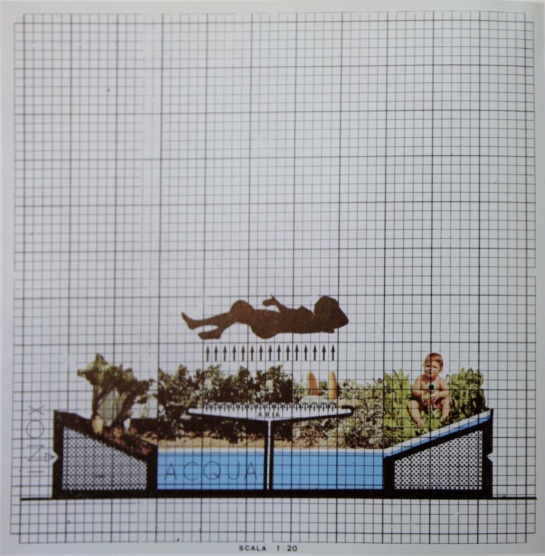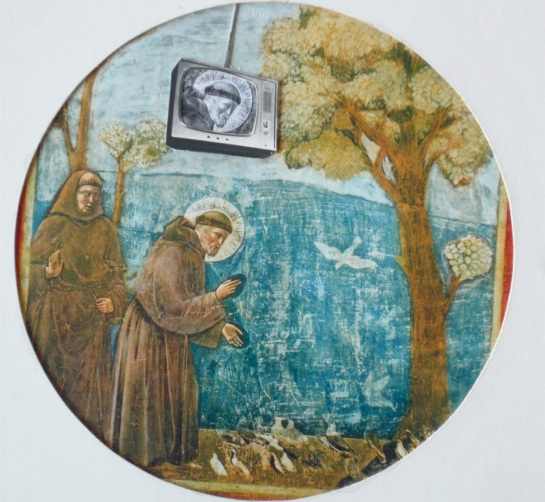Environments and Counter Environments. “Italy: The New Domestic Landscape”, MoMA 1972
12.11 - 20.02.2011
On November 12th, the DHUB presents Environments and Counter Environments. "Italy: The New Domestic Landscape", MoMA 1972, the second temporary exhibition of the LABORATORY OF FABRICATION. Produced by GSAPP Exhibitions at Columbia University’s Graduate School of Architecture, Planning and Preservation and first presented at Columbia’s Arthur Ross Architecture Gallery the adaptation and development of the exhibition for DHUB is the result of collaboration among DHUB, GSAPP, ViaPiranesi and the exhibition curators, Peter Lang, Luca Molinari and Mark Wasiuta.
Under the direction and curation of Emilio Ambasz the 1972 MoMA show commissioned a series of experimental domestic “environments” and a series of film and media projects by the most vibrant Italian architects and designers of the period: Mario Bellini; Alberto Rosselli; Marco Zanuso and Richard Sapper; Joe Colombo; Gae Aulenti; Ettore Sottsass Jr.; Gaetano Pesce; Archizoom; Superstudio; Ugo La Pietra; Gruppo Strum and 9999.
A form of media archeology, Environments and Counter Environmentsassembles for the first time since 1972 these films and media projects. Long missing, the films were fundamentally important to the MoMA exhibition and to the understanding of its most ambitious and polemical claims. The films were tasked with demonstrating the potential of the environments’ capacity to alter domestic behaviors and with providing a vision of the world in which architecture would no longer be described by fixed objects and isolated elements, but would sponsor new social relations and radical new types of organization, transformation and adaptation.
Environments and Counter Environments returns to the 1972 exhibition, not as a reconstruction, but as an analytical project that attempts to reassess the visionary possibilities of architecture and design suggested by Italy: The New Domestic Landscape. Though domestic in scale the environments were urban in context and potentially revolutionary in terms of social and political practice.
From this standpoint, the exhibition presented by the DHUB engages once again with these mediatic and environmental strategies and their potential to challenge and rethink the boundaries of architecture and domestic spaces and their conditions and territories. The DHUB adaptation ofEnvironments and Counter Environments comprises four categories of material: digital projections of documentary photographs of the environments installed in the MoMA exhibition and of the introductory, explanatory film written and directed by Emilio Ambasz and screened in the original exhibition; the eight films by the architects and designers who took part in the MoMA show; original collages, drawings, photographs and models from the archives of Gae Aulenti, Joe Colombo, 9999, Ugo La Pietra, Gaetano Pesce, Gruppo Strum and Superstudio documenting the concepts and creative processes of the environments; and archival reproductions of design documents for the MoMA environments by Archizoom, Mario Bellini, Alberto Rosselli, Ettore Sottsass Jr. and Zanuso/Sapper.
Place: DHUB, Espai 0 (Montcada, 12)
Time: Tuesday to Friday from 11a.m. to 7 p.m. Saturdays, Sundays and Holidays from 11 a.m. to 8 p.m.
Price: Consult Practical Information
Credits
Organization and Production: GSAPP, Columbia University i DHUB
Curated by: Mark Wasiuta, Luca Molinari, Peter Lang
Co-ordination of Content at the DHUB: Carlos Ipser
European Co-ordinator: Viapiranesi Srl
Co-ordination DHUB: Anna Buti, Esperança Codina
Original design of the exhibit: Mark Wasiuta
Adaptation of the design for the DHUB and production of the exhibition:Emiliana Design Studio
Graphic design: Mucho
Photographic reproduction (Arxius CSAC): Laboratori Còpia
Texts: Mark Wasiuta, Luca Molinari, Peter Lang
Translations and corrections: Glòria Bohigas, Graham Thomson
Transport: Gondrand S.p.A.
Insurance: Axa Art, MARSH, S.A.
Under the direction and curation of Emilio Ambasz the 1972 MoMA show commissioned a series of experimental domestic “environments” and a series of film and media projects by the most vibrant Italian architects and designers of the period: Mario Bellini; Alberto Rosselli; Marco Zanuso and Richard Sapper; Joe Colombo; Gae Aulenti; Ettore Sottsass Jr.; Gaetano Pesce; Archizoom; Superstudio; Ugo La Pietra; Gruppo Strum and 9999.
A form of media archeology, Environments and Counter Environmentsassembles for the first time since 1972 these films and media projects. Long missing, the films were fundamentally important to the MoMA exhibition and to the understanding of its most ambitious and polemical claims. The films were tasked with demonstrating the potential of the environments’ capacity to alter domestic behaviors and with providing a vision of the world in which architecture would no longer be described by fixed objects and isolated elements, but would sponsor new social relations and radical new types of organization, transformation and adaptation.
Environments and Counter Environments returns to the 1972 exhibition, not as a reconstruction, but as an analytical project that attempts to reassess the visionary possibilities of architecture and design suggested by Italy: The New Domestic Landscape. Though domestic in scale the environments were urban in context and potentially revolutionary in terms of social and political practice.
From this standpoint, the exhibition presented by the DHUB engages once again with these mediatic and environmental strategies and their potential to challenge and rethink the boundaries of architecture and domestic spaces and their conditions and territories. The DHUB adaptation ofEnvironments and Counter Environments comprises four categories of material: digital projections of documentary photographs of the environments installed in the MoMA exhibition and of the introductory, explanatory film written and directed by Emilio Ambasz and screened in the original exhibition; the eight films by the architects and designers who took part in the MoMA show; original collages, drawings, photographs and models from the archives of Gae Aulenti, Joe Colombo, 9999, Ugo La Pietra, Gaetano Pesce, Gruppo Strum and Superstudio documenting the concepts and creative processes of the environments; and archival reproductions of design documents for the MoMA environments by Archizoom, Mario Bellini, Alberto Rosselli, Ettore Sottsass Jr. and Zanuso/Sapper.
Place: DHUB, Espai 0 (Montcada, 12)
Time: Tuesday to Friday from 11a.m. to 7 p.m. Saturdays, Sundays and Holidays from 11 a.m. to 8 p.m.
Price: Consult Practical Information
Credits
Organization and Production: GSAPP, Columbia University i DHUB
Curated by: Mark Wasiuta, Luca Molinari, Peter Lang
Co-ordination of Content at the DHUB: Carlos Ipser
European Co-ordinator: Viapiranesi Srl
Co-ordination DHUB: Anna Buti, Esperança Codina
Original design of the exhibit: Mark Wasiuta
Adaptation of the design for the DHUB and production of the exhibition:Emiliana Design Studio
Graphic design: Mucho
Photographic reproduction (Arxius CSAC): Laboratori Còpia
Texts: Mark Wasiuta, Luca Molinari, Peter Lang
Translations and corrections: Glòria Bohigas, Graham Thomson
Transport: Gondrand S.p.A.
Insurance: Axa Art, MARSH, S.A.










